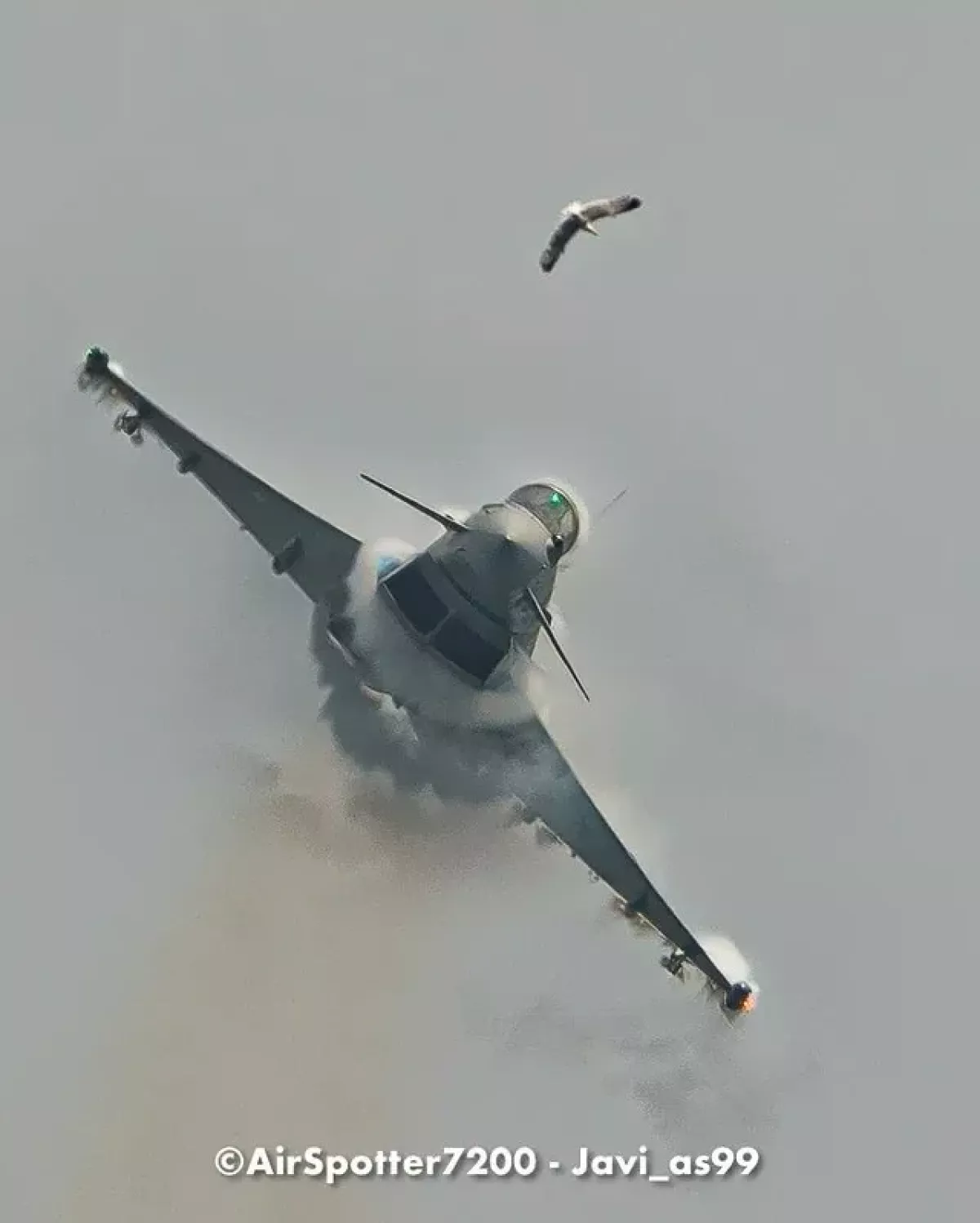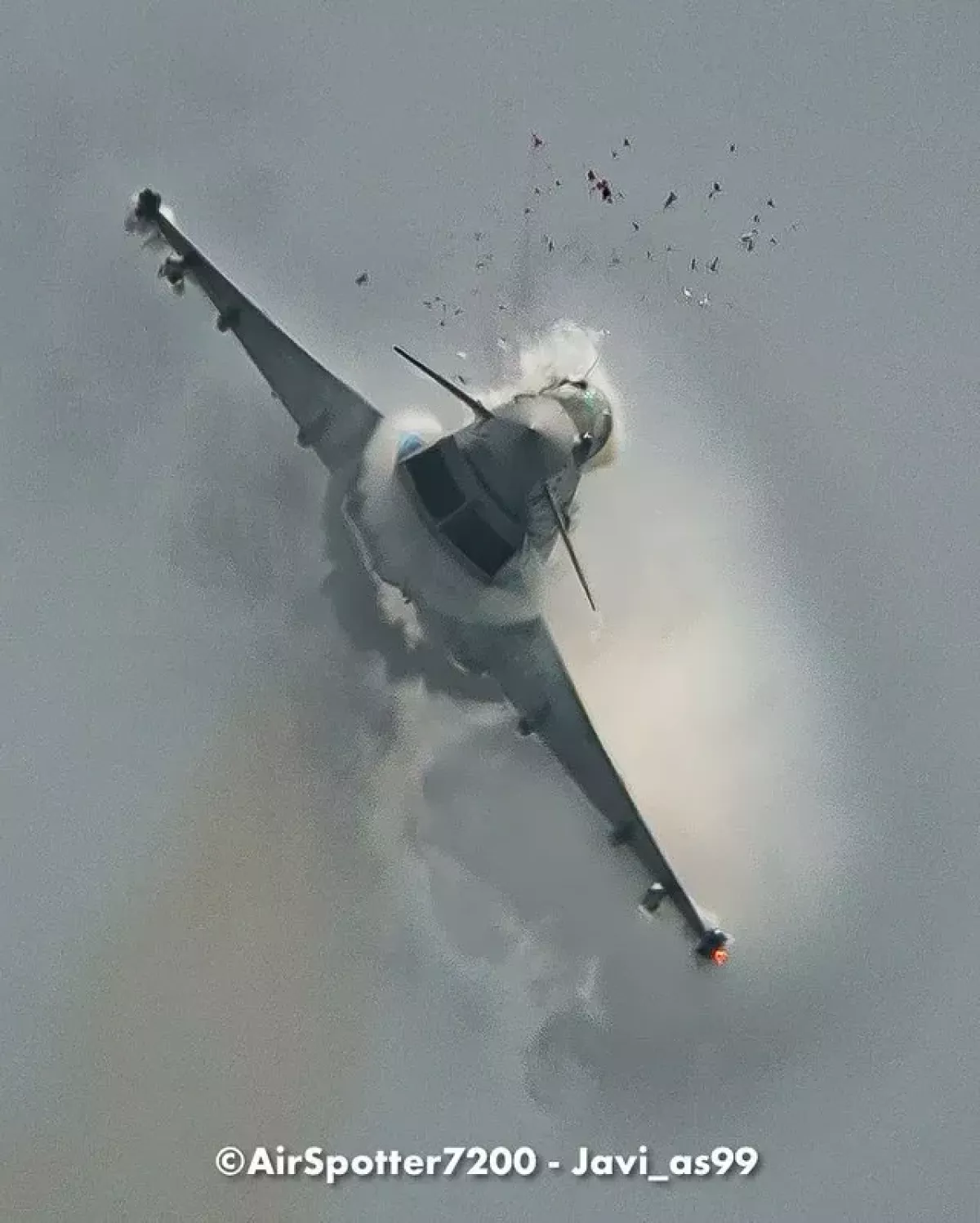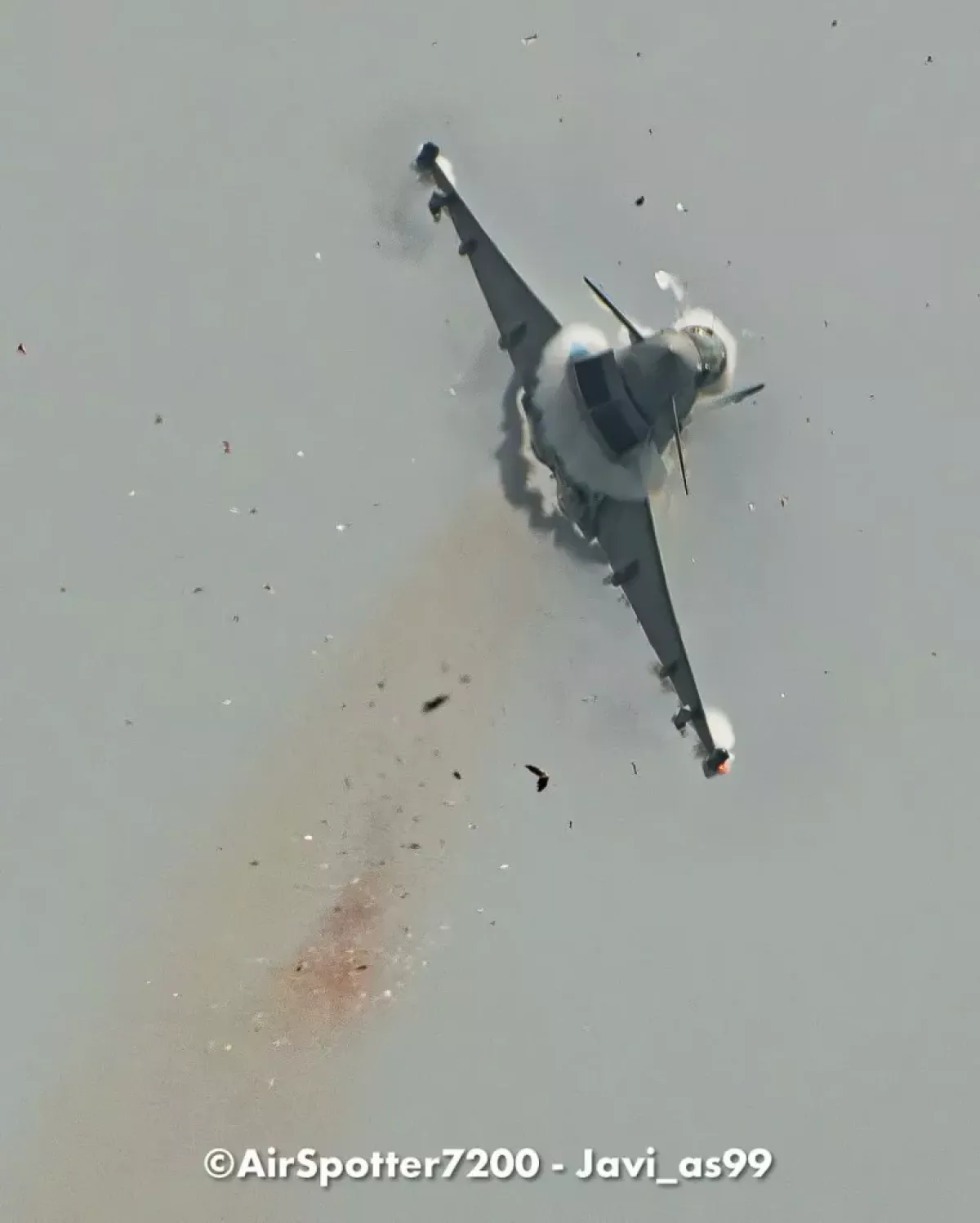Photographer captures dramatic bird strike on Eurofighter jet in rare opportunity PHOTO
Every year, tens of thousands of bird strikes occur around the world, posing significant risks to aircraft—especially high-performance fighter jets. One such dramatic incident was recently captured in a rare sequence of photos by Spanish photographer Javier Alonso de Medina Salguero and published only now. The Aire 25 air show in Spain's San Javier was part of the 40th anniversary celebration for the Spanish Air Force’s Eagle Patrol in June and was attended by King Felipe VI.
The incident involved a Spanish Air Force EF2000 Eurofighter Typhoon from the 11th Wing based in Morón. The War Zone publication reports that as the jet performed aerobatic manoeuvres during its routine, a Lesser Black-Backed gull flew into its path. Salguero, who was photographing the demonstration from the base of the spotter area using a Nikon 200-500mm lens, captured the moment in a dramatic four-shot sequence and published them only recently.
In the first photo, the gull is seen just before impact. The second shows the bird striking the right side of the Eurofighter’s canopy, disintegrating into feathers and debris. The third image reveals a piece of the canopy breaking off, with blood, feathers, and other remnants visible in the air. The fourth is a close-up of the canopy’s broken glazing. Salguero, an experienced aviation photographer, said it was the first time he had witnessed a bird strike and was shocked both by the event and the clarity of the images.
Following the strike, the Eurofighter immediately aborted its routine and returned to the nearby San Javier Air Base. A team from the Spanish Air Force's repair unit was dispatched to assess the damage. The incident was swiftly managed and no injuries were reported. However, the canopy sustained significant damage, and the potential for disaster was very real.
The publication points out that while bird strikes are always dangerous, they are especially so during low-altitude, high-speed manoeuvres typical of air shows. Fighter jets, with their thin margins for error and complex flight demands, are particularly vulnerable. Pilots often have little or no warning before impact, especially when flying at high speeds. Even if a bird doesn’t destroy an engine or critical component, it can disorient the pilot which is equally dangerous or cause damage to the canopy, avionics, or flight controls.
Single-engine jets are at greater risk, as a bird strike to the engine can result in complete loss of power. Although twin-engine fighters have slightly more redundancy, multiple bird strikes can still disable them. Low-altitude encounters are especially perilous, offering pilots little time to react or recover.
By Nazrin Sadigova











